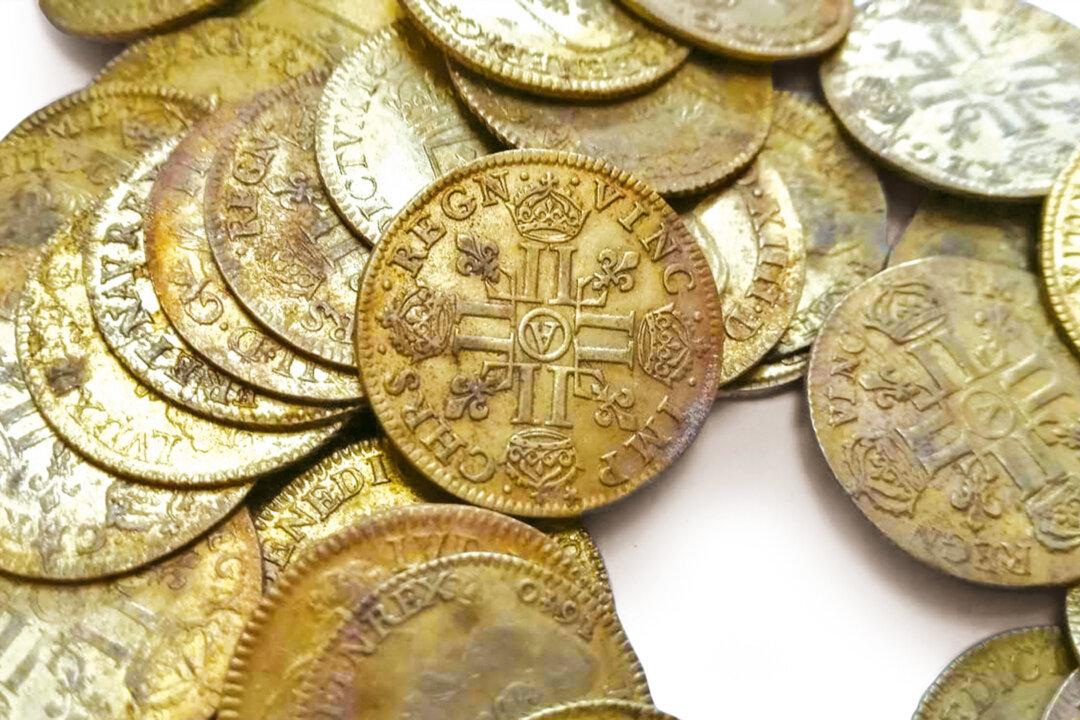While remodeling an old mansion in the French countryside, three craftsmen stumbled on hidden treasure: 239 rare gold coins stashed away in the walls of the property. The hoard is valued at roughly $350,000.
In 2019, the married couple who owned the home in Plozévet—a commune in the Finistère department of Brittany in northwestern France—decided to renovate the plot, which they purchased seven years earlier, joining three buildings together.





